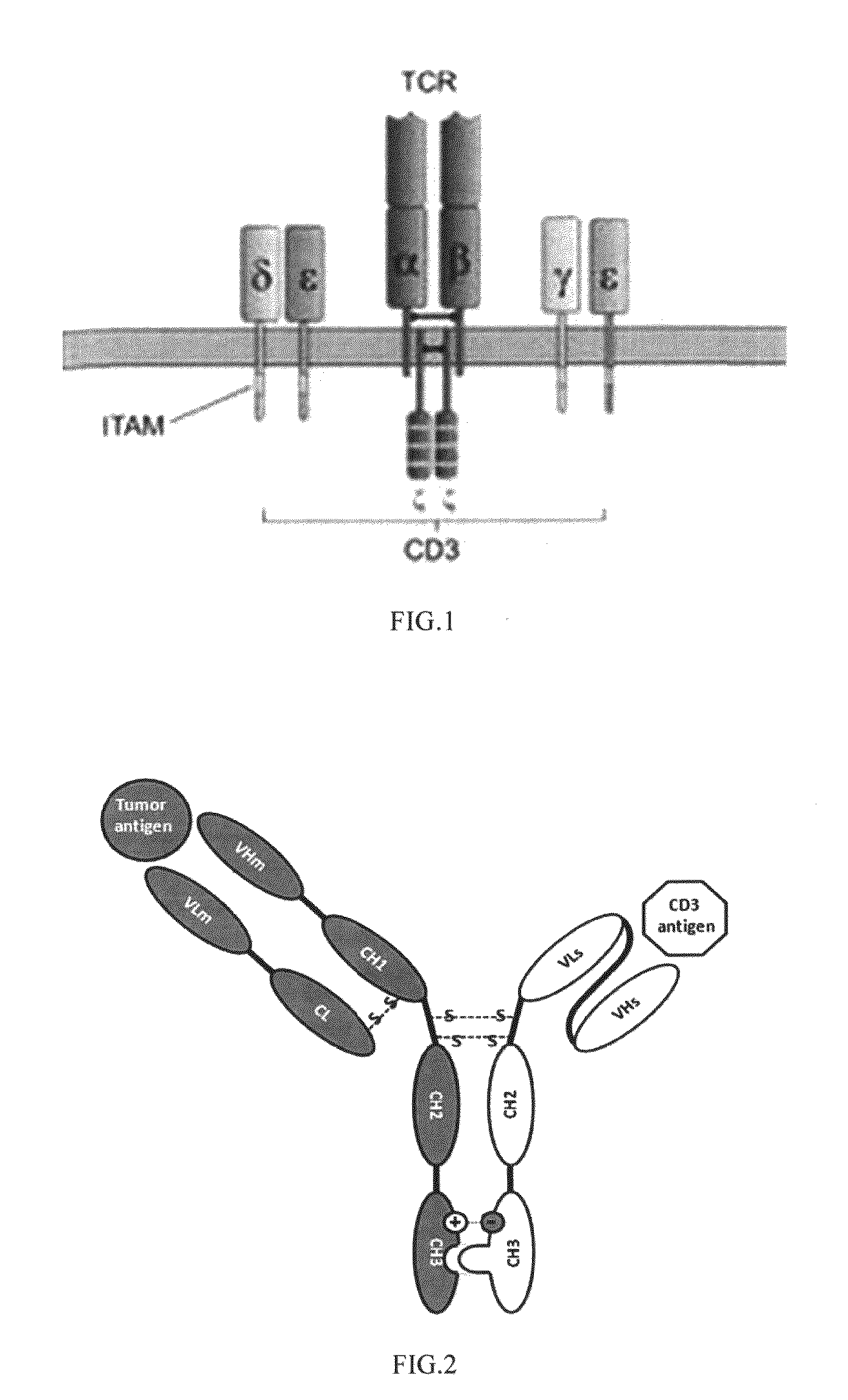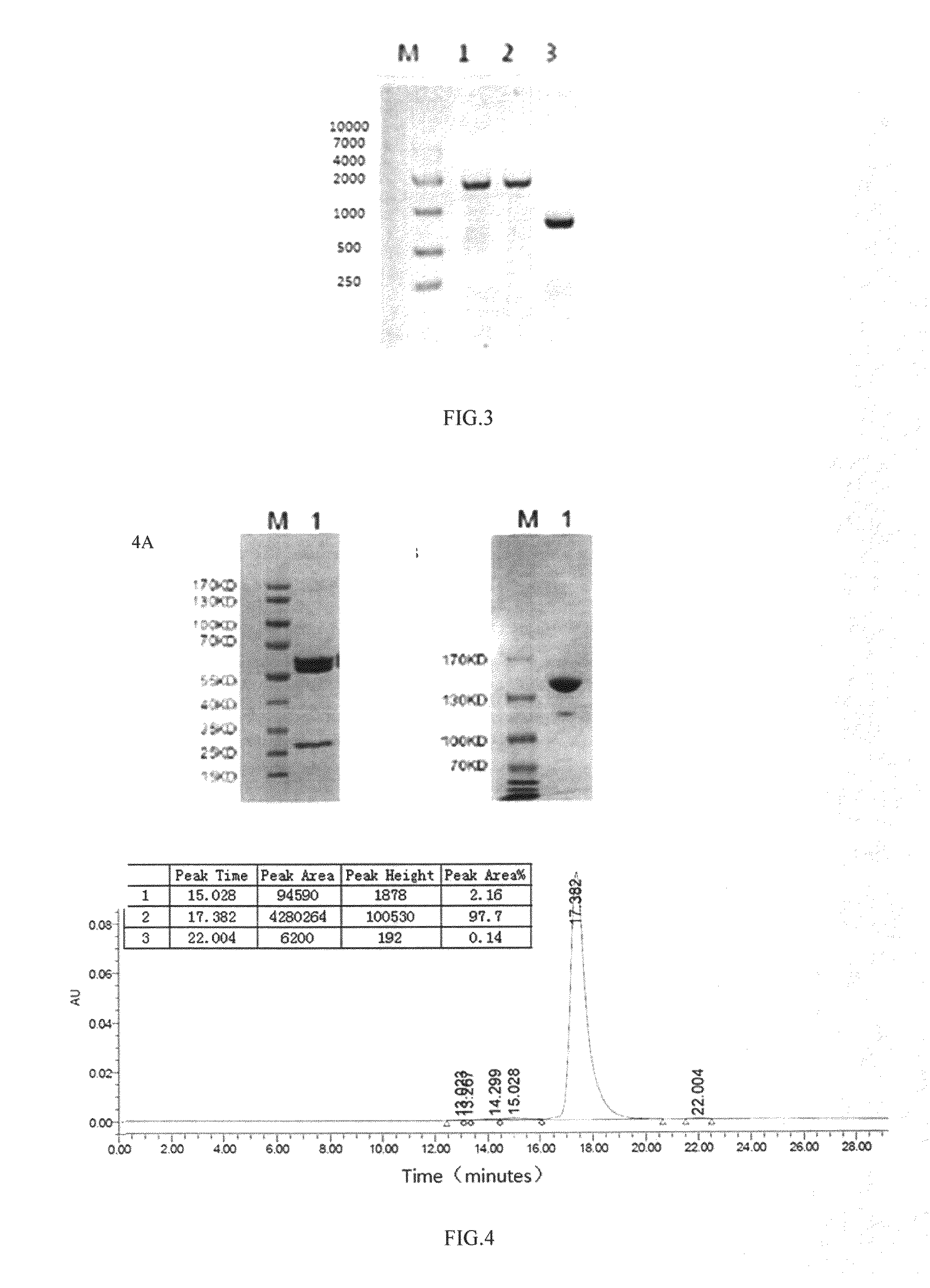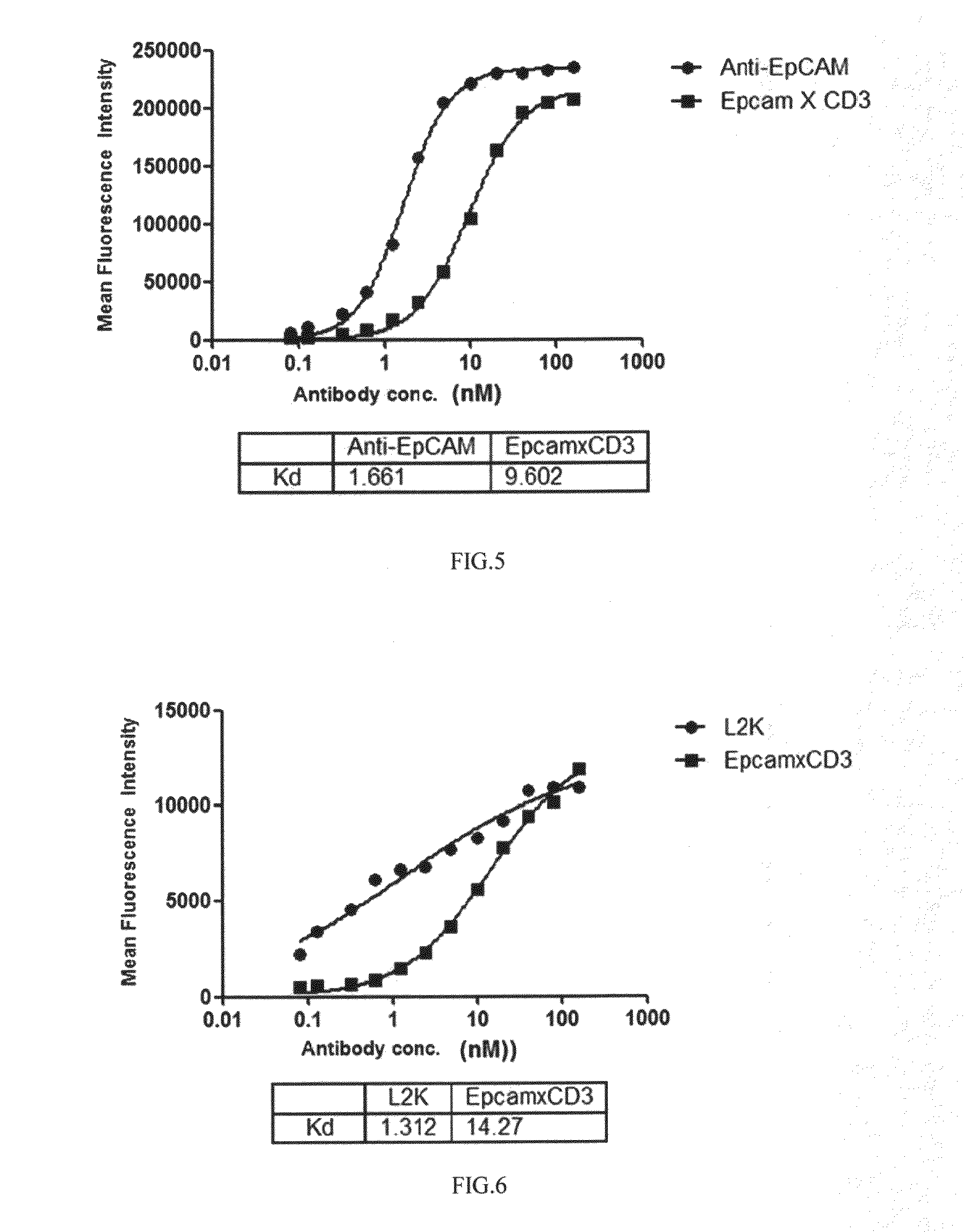Construction and application of bispecific antibody EpCAMxCD3
a bispecific antibody and antibody technology, applied in the field of immunology, can solve the problems of low yield, difficulty in purification, and difficulty in expression
- Summary
- Abstract
- Description
- Claims
- Application Information
AI Technical Summary
Benefits of technology
Problems solved by technology
Method used
Image
Examples
example 1
Construction of Expression Vector of Bispecific Antibody (EpCAM×CD3, M701)
[0061]1. Sequence Design of Bispecific Antibody
[0062]The bispecific antibody taking EpCAM and CD3 as targets is named as M701 (as shown in FIG. 2), wherein the anti-EpCAM side is of an IgG form, includes anti-EpCAM heavy chain and light chain and contains Fab and Fc structural domains; the anti-CD3 side is of an ScFv-Fc form and comprises anti-CD3 VH, VL and Fc structural domains. Wherein, Fc of the side of the IgG form is subject to KKW transformation, whereas Fc of the ScFv-Fc side is subject to LDY transformation (the specific Fc transformation process refers to PCT / CN2012 / 084982), so that each of which is not easy to form a homodimer, but is easy to form a heterodimer, namely the EpCAM×CD3 bispecific antibody. In the meantime, in order to ensure that the bispecific antibody can be expressed in a CHO cell and secreted into a culture medium, a leading peptide sequence of a mouse-derived kappa chain is select...
example 2
Expression and Purification of Bispecific Antibody
[0068]1. Expression of Bispecific Antibody
[0069]Plasmid maxiprep was performed by using an endotoxin-free maxiprep kit (Qiagen, 12391) and specific operations were performed according to the instructions provided by the manufacturer. CHO-S cell culture was performed in a CD CHO culture medium (Gibco, 10743-029) at 37° C. in a 5% CO2 cell incubator according to the instructions provided by the manufacturer, and after the cells were prepared, plasmids pCHO1.0-anti-EpCAM-HL-KKW and pCHO1.0-Herceptin-L2K-ScFv-Fc-LDY were co-transfected to the CHO-S cells by using a Maxcyte STX electroporation apparatus so as to express the bispecific antibody M701 directed to anti-EpCAM×CD3 according to the instructions (Maxcyte) provided by the manufacturer.
[0070]After the second day of co-transfection, the culture temperature drops to 32° C., 3.5% Feed A was replenished every day, and after culture for 14 days, the supernatant was harvested by 800*g ce...
example 3
Binding Activity Measurement (FACS) of Bispecific Antibody and Cells
[0073]The bispecific antibody of the present invention binds to target antigens on the corresponding cells. As concerned in the present invention, with HCT116 (purchased from American Type Culture Collection ATCC, CCL-247) as an EpCAM positive cell and Jurkat (Jurkat, TIB-152) as a CD3 positive cell, the cell binding activity therebetween was measured by means of the bispecific antibody prepared in the present invention.
1. Detection of Binding Activity of Bispecific Antibody and the HCT116 Cells Via Fluorescence-Activated Cell Sorting
[0074]Enough HCT116 cells are cultured, digested with 0.25% trypsin and then collected by centrifugation. In the meantime, the bispecific antibody was diluted according to the concentration beginning from 10 ug / ml and ten-fold gradient dilution to obtain twelve concentration gradients for later use. The collected cells are washed twice with PBS+1% FBS and resuspended to 4×106 cell / ml wi...
PUM
| Property | Measurement | Unit |
|---|---|---|
| total volume | aaaaa | aaaaa |
| time | aaaaa | aaaaa |
| temperature | aaaaa | aaaaa |
Abstract
Description
Claims
Application Information
 Login to View More
Login to View More - R&D
- Intellectual Property
- Life Sciences
- Materials
- Tech Scout
- Unparalleled Data Quality
- Higher Quality Content
- 60% Fewer Hallucinations
Browse by: Latest US Patents, China's latest patents, Technical Efficacy Thesaurus, Application Domain, Technology Topic, Popular Technical Reports.
© 2025 PatSnap. All rights reserved.Legal|Privacy policy|Modern Slavery Act Transparency Statement|Sitemap|About US| Contact US: help@patsnap.com



